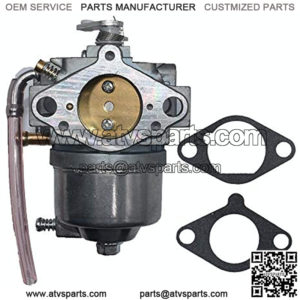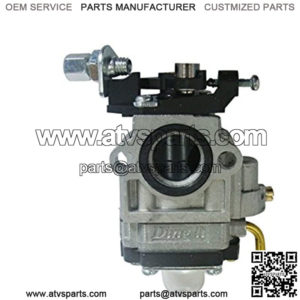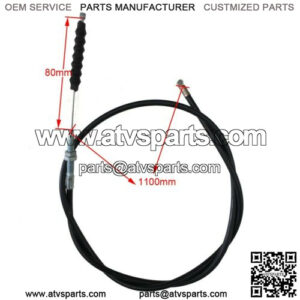An ATV carburetor performs the vital role of mixing air and gasoline (in the right amounts) before getting the mixture into the ATV’S cylinders. Although not commonly used in modern ATV releases, carburetors are still popular for owners who don’t mind tuning their cars or ATVs frequently. But how does an ATV carburetor work?
An ATV carburetor works by mixing air and fuel to allow for internal combustion. Carburetors usually have a narrow kink called a venturi that speeds up the air, thus lowering its pressure. Decreased air pressure allows the fuel pipe to release fuel, allowing air and fuel to mix in the cylinders.
Curious to learn how an ATV carburetor works? Then you couldn’t be in a better place. Read on as we break down the basic functions of a carburetor.

What Is a Carburetor?
A carburetor is a mechanical device that mixes fuel and air to allow for internal combustion. Its function is inspired by Bernoulli’s principle, which states that as air moves faster, its static pressure reduces, consequently increasing its dynamic pressure.
An ATV carburetor has an open pipe in the form of a venturi, which allows for the passage of air into the engine’s inlet manifold. The inlet manifold, also called the intake manifold, is part of the engine that supplies the air/fuel mixture to the cylinders.
The venturi widens and narrows strategically to regulate airspeed. You’ll find a butterfly valve known as the throttle valve, which can be turned to either block or allow airflow into the system. By controlling the amount of air that flows through the carburetor’s throat, the valve determines the air/fuel mixture ratio, thus regulating engine speed and power.
The narrowest part of the venturi usually has small holes that allow for the introduction of fuel. The presence of jets ensures that fuel flow is regulated precisely in the fuel path, thus allowing for proper combustion.
How Does an ATV Carburetor Work?
Carburetors usually vary in terms of design and complexity. However, most of these mechanical devices function on the same basic principle- mixing air and fuel to promote combustion and consequently power the engine.
You’ll find that most ATV carburetors use a simple design. They have a vertical air pipe that’s strategically located above the engine cylinders. The vertical air pipe is then joined to a horizontal fuel pipe (at the narrowest part of the venturi).
The failing pressure of the speeded-up air creates a much-needed sucking effect for the release of fuel. The air-fuel mixture can then be regulated through two swiveling valves located above and below the carburetor’s venturi.
The top valve is called a choke and regulates the amount of air that can flow in the venturi. When the choke is closed, airflow is restricted, allowing the venturi to suck in more fuel, thus giving the engine a fuel-rich mixture.
This comes in extra handy when the engine is cold, running quite slow, or when it’s just starting up.
The second valve is called the throttle and also helps to regulate the air-fuel mixture. The more the carburetor’s throttle is open, the more the airflow inside the carburetor, which translates to more fuel being sucked.
This results in more energy release, increased power, and eventually a faster ATV, hence explaining why opening the throttle valve allows an engine to accelerate.
Here’s a quick summary of how the ATV carburetor works:
- Air flows from the ATV’s air intake and into the top of the carburetor.
- The air then passes through a filter that cleans potential debris, ensuring only clean air gets inside the carburetor.
- When the ATV engine is started, the choke can be adjusted such that it strategically blocks the top of the pipe, thus reducing the total amount of air flowing inside the carburetor. This consequently increases the fuel content in the mixture that enters the cylinders.
- In the center of the carburetor, the air is forced down through the venturi, which speeds it up, thus leading to a drop in overall pressure.
- The dip in air pressure helps create suction on the fuel pipe, which draws in the fuel.
- The throttle, located at the bottom of the venturi, regulates the mixture of air and gas to allow the engine to produce more power, making the ATV move faster.
- The air and fuel mixture then flows into the engine’s cylinders.
- The fuel is continuously supplied to the mixture through the float-feed chamber.
- The choke opens whenever the fuel level falls.
- Increased air supply means the pressure will reduce at the venturi, thus allowing for increased fuel flow.
About ATV carburetor
“atv carburetor replacement”
“atv carburetor parts”
“atv carburetor diagram”
“atv carburetor near me”
“atv carburetor cleaner”
“atv carburetor rebuild kit”











